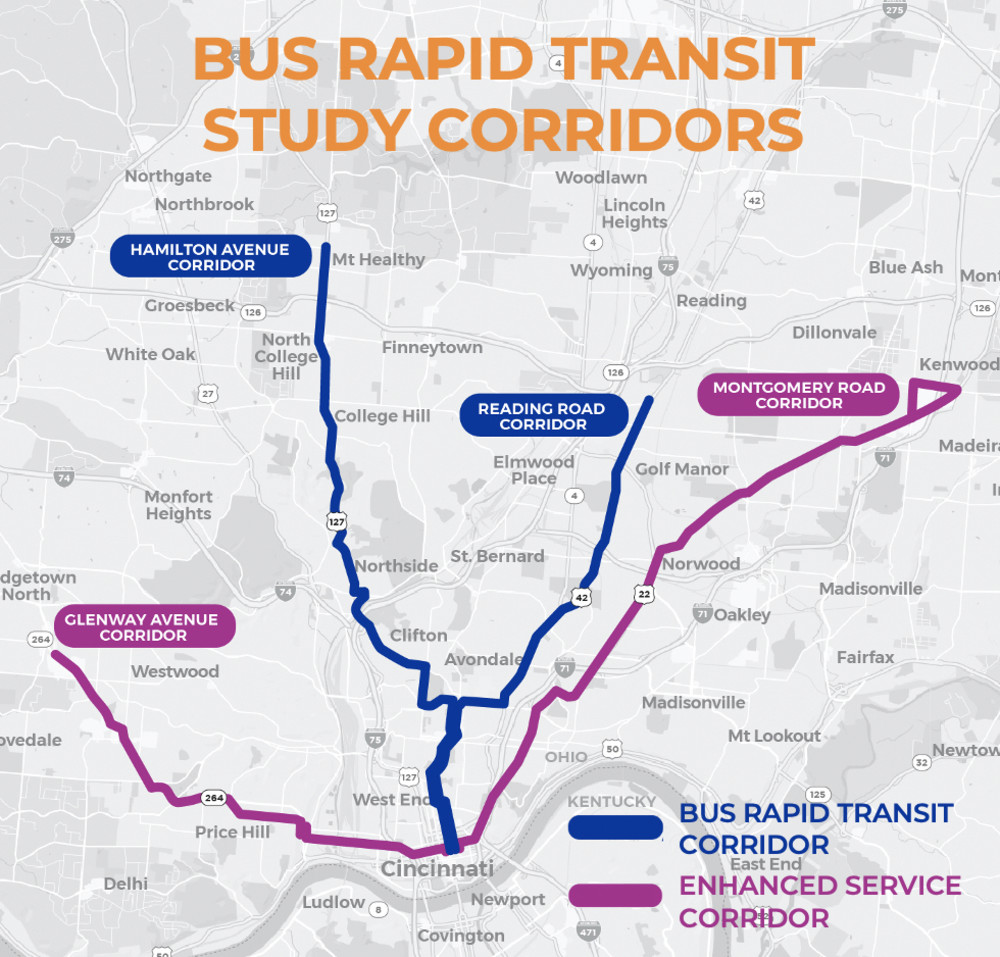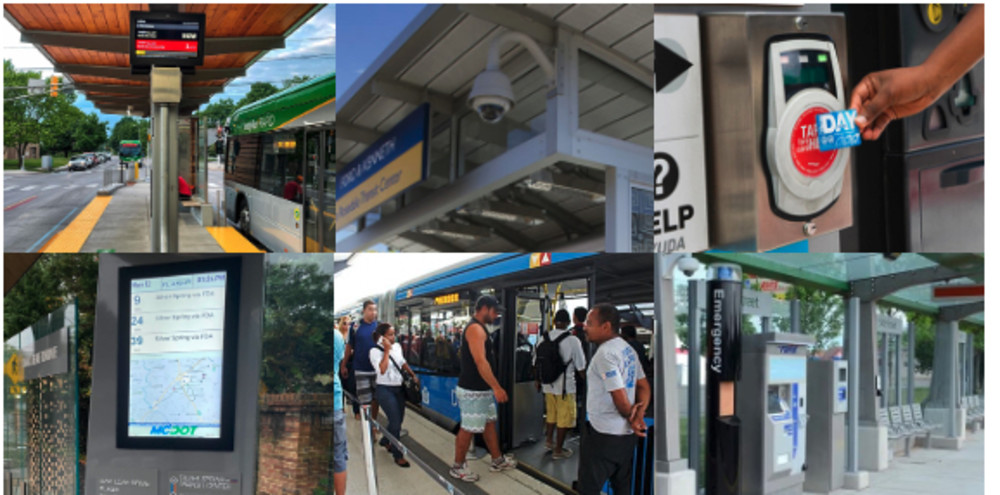BRT Station Design Virtual Workshop
BRT Station Design Virtual Workshop
Southwest Ohio Regional Transit Authority (SORTA) - Cincinnati Metro
BUS RAPID TRANSIT STATION DESIGN
VIRTUAL WORKSHOP
Thank you for participating in our virtual Bus Rapid Transit (BRT) Station Design Workshop! Your input is important and will be used to help shape the concepts we're preparing for Greater Cincinnati's first BRT lines.
Our goal for this workshop is to gather feedback from the public that will help us develop preliminary plans for the BRT stations - where they will be, what they will look like - and identify the type of development communities are interested in having around the stations.
In addition to this virtual experience, we're also currently hosting several in-person workshop. If you'd like to know more abot those, visit the Participate page of our MetroBRTSTudy.com website. Below are links to materials we're sharing at the in-person workshops; the rest of the information and activities on this site are the same as what you'd find at the in-person sessions.
Please continue to scroll down to begin. If you have any questions or need assistance with survey, please send an email to info@MetroBRTStudy.com or call us at (513) 793-1234.
OVERVIEW
As part of its continued implementation of Reinventing Metro, the Southwest Ohio Regional Transit Authority (SORTA)/Metro is bringing BRT to Greater Cincinnati and Hamilton County. BRT is a high-quality, bus-based travel option that combines the speed, efficiency, and comfort of rail transit with the flexibility of traditional bus service.
Following a program of in-depth study and public input, Metro has identified Hamilton Avenue and Reading Road as the first two corridors that will be used to introduce BRT to our region. Now, the project team is developing a preliminary plan for the stations that will serve its initial BRT lines.
BRT stations are different from traditional bus stations in several ways. BRT stations:
- Are typically larger and more comfortable than traditional bus stations
- Are spaced farther apart than traditional bus stations (typically at least a half mile to a mile apart)
- Are fully accessible and have raised platforms that allow same-level entry into the BRT vehicles; no ramps, lifts, or steps needed
- Can be located in the center of a road to allow for easy boarding and exiting no matter which direction the bus is traveling
- Are lit at night
- Can offer a variety of amenities such as real-time arrival signage, pay-in-advance fare kiosks, emergency call boxes and security cameras, bike storage and/or bike share options, Wi-Fi, charging ports, ambient lighting, and more
These features increase the comfort of riders, make boarding and exiting easier for people of all abilities, and allow BRT stations to play an important role in facilitating faster travel along BRT lines.
Above: A collage of BRT station features (from top left to bottom right): two-sided BRT station, security camera, pre-paid fares, real-time arrival information, level-boarding, emergency call box and ticketing kiosk.
BRT stations can also serve as catalysts for community enhancement and economic growth. Many cities capitalize on the establishment of BRT stations to create plans for the areas around stations that will attract new businesses, stores, restaurants, housing, multi-modal transit, and more. These elements all work together to help create vibrant, livable, and walkable districts within the surrounding neighborhoods.
Above: Images from BRT station area plans from the Maryland Transit Administration (MTA), MD; City of Kirkland, WA; and Montgomery County, MD.
At this stage in planning for Metro's BRT system, we're taking a closer look at the stations proposed along the Hamilton and Reading BRT lines. We're seeking the community's input to confirm where these stations should be located, what they should look like, what amenities they should include, and what level of community enhancement and economic growth is desired around each of the station locations. The following pages of this virtual workshop focus on these topics.


